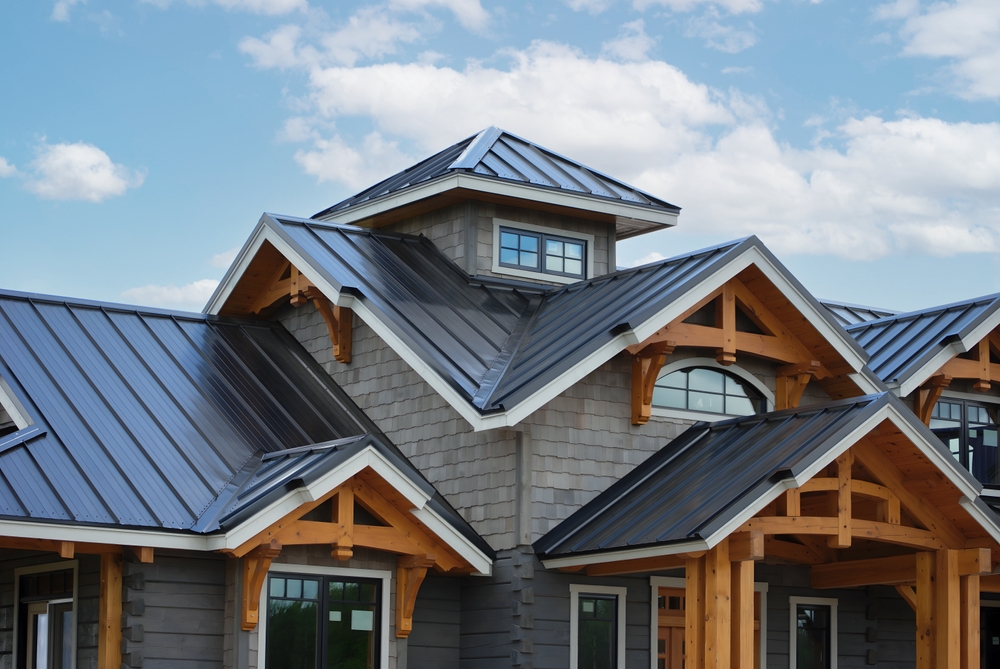Following proper guidelines is often important when dealing with metal roofing and related materials, and any situation where cutting is required will often be a good example. Metal siding often requires cutting – how should you be going about this process if your project calls for it?
At Mid Michigan Metal Sales, we’re proud to offer a wide range of metal roofing panels, metal siding products, metal shingles and related products to clients around Michigan. Our metal roofing suppliers are also happy to provide basic expertise on the use of our various products, including important processes like cutting. Here are some of the common reasons why you might need to cut metal siding, some of the different tool types you might consider for this job, and some other important related topics.
Common Reasons to Cut Metal Siding
What are some of the most common reasons why homeowners or contractors need to cut their metal siding? Here are some of the biggest ones:
- Custom fit: Metal siding is often used to cover unique surfaces, such as circular walls or angled rooflines. This requires custom cuts for each panel in order to achieve a perfect fit.
- Trim work: Finishing off the edges of your metal siding can require a cut. This includes creating end caps or adding trim pieces to complete the look of your project.
- Repairs: If any damage occurs to your metal siding, it may need to be cut in order to remove and replace the damaged section.
- Installation: Of course, simply installing metal siding will require you to make cuts as needed in order to fit the panels to your specific project.
Types of Tools for Cutting Metal Siding
There are a few different types of tools that can be used for cutting metal siding, and each has its own advantages and disadvantages. Here are some options you might consider:
- Tin snips: This is typically the most common tool for cutting metal siding. They are easy to use and relatively inexpensive, making them a popular choice for DIY projects. However, they can be difficult to use on thicker or harder metals.
- Circular saw with metal cutting blade: For larger projects or thicker materials, a circular saw may be a better option. With the right blade, this tool can make quick work of cutting through metal siding.
- Power shears: If you have a large amount of cutting to do, power shears can be a more efficient option. They are also ideal for cutting intricate shapes and designs in metal siding.
- Twin cutter: This tool is a great option for making precise cuts quickly. It uses two cutting discs to create clean, straight cuts in metal siding.
- Nibbler: A nibbler can be used for more delicate cutting tasks, such as creating curves or notches in metal siding.
Determining which tool is best for your project will depend on the type of metal siding you are using, the complexity of the cuts needed, and your own level of experience. It’s always a good idea to consult with an expert if you’re unsure about which tool to use or how to properly use it.
Important Safety Measures
When cutting metal siding, there are important safety measures you should always follow to ensure a successful and injury-free project. These include:
- Wearing appropriate safety gear, such as gloves and eye protection.
- Using the correct tool for the job and making sure it is in good working condition.
- Taking breaks when needed to prevent fatigue and maintain focus.
- Securing the metal siding properly before cutting to prevent slipping or movement.
- Following the manufacturer’s instructions and safety guidelines for the specific tool being used.
- Being aware of your surroundings, especially when using power tools that can create sparks or debris.
By following these safety measures, you can protect yourself and those around you while completing your metal siding cutting project.
Proper Storage
Both before and after cutting metal siding, it’s important to properly store the materials in order to maintain their quality and prevent any potential hazards. Before cutting, make sure the metal siding is stored in a dry and secure location. After cutting, carefully dispose of any scraps or use them for another project if possible. Finally, store the remaining pieces in a dry and safe place where they will not be damaged or become a safety hazard.
Cutting metal siding is an important and sometimes necessary step in any project involving this material. By following proper guidelines, using appropriate tools, and taking the necessary safety measures, you can ensure a successful and efficient cutting process. Remember to consult with experts if needed and properly store your materials before and after cutting for best results.
At Mid Michigan Metal Sales, we are always available to offer guidance on using our metal products for your projects. Contact us today for more information and expert advice, or to learn about our wide array of metal roofing materials for clients around Michigan.



